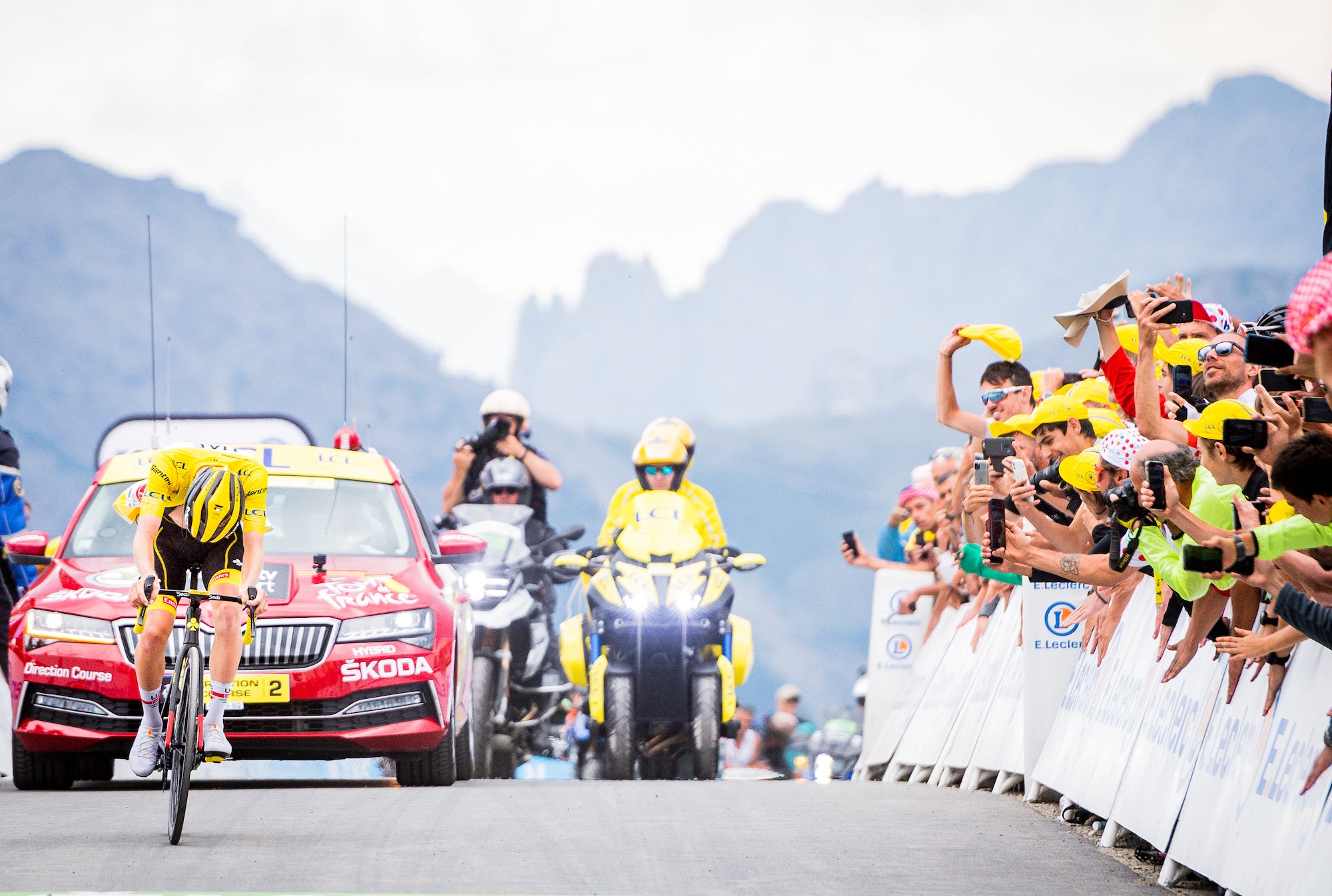The image of Tadej Pogačar slumped over his bike at the top of the Col du Granon, his pale torso visible through his unzipped jersey, is one that will live long in the memory. Witnessing the great champions crack is one of the most evocative sights in the sport of cycling, especially when they’ve looked as untouchable as the Slovenian has these past few years.
However invisible he may look in future Tours, his rivals will now always have this footage to rewatch as proof that he is indeed beatable.
Read more
- Tour de France 2022 route: everything you need to know about the 109th edition
- Tour de France standings: the latest results from the race
- How to watch and live stream the Tour de France 2022
Nevertheless, whatever ailed Pogačar yesterday was no longer a problem during today’s second successive Alpine stage, in which he had the legs to launch two stinging attacks in front of the thousands of spectators lining the roads of the famous Alpe d’Huez. Jonas Vingegaard might have been able to follow both times, and clung to his wheel during the final sprint to the line to defend his yellow jersey, but it became clear that the defending champion is alive and kicking, and intends to take this race all the way to Paris. We have a race on our hands.

All manner of reasons have been proposed to explain what happened to Pogačar on the Col du Granon. Was it the heat? A hunger knock? Perhaps he’d even fallen victim to the Covid outbreak that’s swept through his UAE Team Emirates squad this Tour? But given how it now appears to be a temporary problem rather than something more terminal, the explanation that the Slovenian gave himself — that he made a tactical error of trying to follow too many of Jumbo-Visma’s attacks, and suffered from fatigue later — is the most convincing.
Now, Jumbo-Visma’s strategy has shifted from attack to defence mode, and they did an authoritative job of controlling the race on Alpe d’Huez. One by one their legion of climbing domestiques did turns that thinned out the group of favourites, with Roglič’s pace dropping Nairo Quintana (Arkéa–Samsic) and David Gaudu (Groupama-FDJ), before Sepp Kuss then took out Romain Bardet (DSM) and Adam Yates (Ineos Grenadiers). Even on the occasions Pogačar attacked, it didn’t take long for Kuss to make his way back up, and continued pacing Vingegaard all the way to the summit.
Jumbo-Visma therefore look well-equipped to defend the yellow jersey. But is Vingegaard himself? As impressive as the Dane has been so far this Tour, it must be remembered that he has entered totally uncharted territory. Not only has he never worn the leader’s jersey at a Grand Tour, he’s never won a stage race of any description during his professional career.
He’s been part of winning teams before, with some of his best results coming while riding as a super-domestique for Roglič, such as his runner-up finishes behind his Slovenian teammate at both this year’s Critérium du Dauphiné last June and last year’s Tour of the Basque Country. But riding as a leader, in the biggest race of them all, comes with the kind of pressure he’s never come close to experiencing before. We know how imperturbable Pogačar is, but having such a blasé attitude is a rare gift. The relaxed, impudent smiles he keeps giving to the TV whenever the camera motorbike rides up alongside him suggests Pogačar is relishing the challenge put before him, and is going to subject Vingegaard to significant psychological pressure as well as physical.

Then there’s the spectre of the 2020 Tour that hangs over Jumbo-Visma to consider. It will not have escaped the team that this Tour ends with a long time trial, just as it did in 2020, when Pogačar memorably overturned a 1-56 deficit on Roglič to take the yellow jersey from them at the very last hurdle. With that in mind, even as a fine time triallist, Vingegaard’s current lead of 2-22 over Pogačar may even feel a little too close for comfort, and he and his team may therefore feel obliged to keep looking to gain time whenever they can.
Neither can Vingegaard afford to make the mistake of fixating solely on Pogačar and ignoring his other rivals. Romain Bardet (DSM) in fourth and Nairo Quintana (Arkéa–Samsic) both have bags of Tour experience, and remain in contention at 2-35 and 3-58 respectively.
Though Vingegaard and Pogačar’s duel stole the limelight on Alpe d’Huez, it should be noted how Geraint Thomas ground his way back up to them after both attacks, and lost time to neither at the line, keeping his deficit to Vingegaard at 2-26. Ineos Grenadiers have too illustrious a history at this race to settle for a podium spot, and with the stealthy Adam Yates still a factor in fifth overall at 3-44, and even the stage winner Tom Pidcock potentially posing a threat in eighth at 7-39, still have plenty of cards to play. We don't want to jinx anything (especially with the threat of Covid still looming), but the stage is set for one of the most exciting Tour de France climaxes in many years.






























